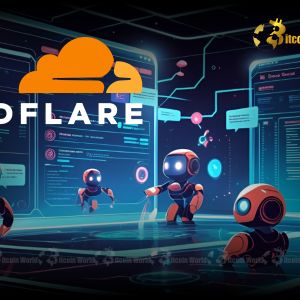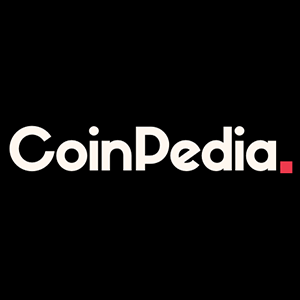BitcoinWorld Cloudflare Empowers Publishers with Revolutionary AI Bot Scraping Marketplace The digital landscape is shifting, and for online publishers, the ground beneath their feet feels increasingly unstable. As artificial intelligence models rapidly consume vast amounts of data, a critical question arises: how can creators of valuable digital content ensure fair compensation for their work? Cloudflare, a major player in web infrastructure, is stepping into this breach with a bold new initiative that could redefine the relationship between websites and AI—a move that resonates deeply with the core principles of valuing digital assets. Understanding the AI Bot Scraping Challenge For decades, web publishers have operated on a relatively clear model: provide content, get indexed by search engines like Google, receive traffic, and monetize through advertising. This symbiotic relationship, while imperfect, formed the backbone of the online content economy. However, the meteoric rise of AI has introduced a seismic shift. Large language models (LLMs) and AI agents require immense datasets for training, leading to an explosion of AI bot scraping . These bots tirelessly crawl the web, hoovering up information, often without explicit permission or compensation to the original creators. Publishers are now grappling with a stark reality: Declining Referrals: While AI models benefit from their content, the direct traffic back to publisher sites—the lifeblood of their ad revenue—is diminishing. Cloudflare’s own data highlights this imbalance: for every referral Google’s crawler provided, it scraped websites 14 times. In stark contrast, OpenAI’s crawler scraped 17,000 times per referral, and Anthropic’s a staggering 73,000 times per referral. This data paints a clear picture of a system heavily skewed against content creators. Existential Questions: With Google Search traffic fading and AI chatbots rising, traditional business models for news and other online publishers are under severe threat. If users get answers directly from an AI agent, why visit the source website? Legal Battles vs. Licensing Deals: Some major publishers, like The New York Times, have resorted to lawsuits, accusing tech giants of unauthorized use of their copyrighted material. Others have pursued multi-year licensing deals, but these are often limited to large entities and their revenue impact remains uncertain. This uncontrolled, uncompensated scraping poses an existential threat to the very ecosystem that feeds AI. Cloudflare’s Vision for Content Monetization Cloudflare , which serves a significant portion of the internet’s traffic, has been actively working on solutions to empower publishers. Their CEO, Matthew Prince, hinted at a future where content distribution to AI companies would involve compensation. Now, that vision is materializing with the launch of “Pay per Crawl,” an experimental marketplace designed to bring control and fair content monetization back to the publishers. This initiative is built on a foundational shift: a move towards a “permission-based approach to crawling.” Cloudflare announced that new websites set up with their services will now, by default, block all AI crawlers. This means site owners must explicitly grant permission for AI bots to access their content. This seemingly small change represents a monumental shift, giving publishers “the default of control” rather than forcing them to opt-out. Several prominent publishers, including Conde Nast, TIME, The Associated Press, and Fortune, have already endorsed this default-block stance, signaling strong industry support for this new paradigm. Empowering Web Publishers: A New Era of Control The “Pay per Crawl” marketplace offers web publishers unprecedented granularity in managing how AI entities interact with their sites. Instead of a blanket block or open access, publishers can now choose from several options: Micropayment for Every Crawl: Publishers can set a specific rate—a micropayment—for every single “crawl” by an AI bot. This allows them to directly charge for the value their content provides to AI training and response generation. Free Access: Publishers can still choose to allow certain AI crawlers to access their content for free, perhaps for promotional purposes or to support specific AI initiatives they deem beneficial. Complete Blocking: The option to block all AI crawlers remains available, offering total control over their content’s accessibility. Cloudflare’s tools are designed to provide transparency, allowing website owners to discern the purpose of a crawler’s visit—whether for AI training data, AI search responses, or other uses. This level of insight is crucial for publishers to make informed decisions about their content’s value and distribution. The potential here is immense: a scalable business model for the AI era, where publishers can set their own terms and be compensated directly, rather than relying on indirect traffic or opaque licensing deals. The Mechanics of Pay per Crawl: Valuing Digital Content So, how does this revolutionary marketplace work? Cloudflare acts as the central intermediary, facilitating transactions between content creators and AI companies. Participant Requirements: Both AI companies and publishers must have Cloudflare accounts to participate in the “Pay per Crawl” experiment. Setting Rates: Within their Cloudflare accounts, both parties can define their preferences: publishers set the rates at which they are willing to sell a “crawl” of their content, and AI companies can set the rates they are willing to pay. Transaction Facilitation: Cloudflare handles the financial aspect, charging the AI company for the crawl and then distributing the earnings to the publisher. This streamlines the process, removing the need for individual negotiations or complex billing systems. It’s important to note that, at this time, Cloudflare spokesperson Ripley Park confirmed to Bitcoin World that there are no stablecoins or cryptocurrency involved in Pay per Crawl. While many in the digital asset space might see this as a perfect application for micropayments via blockchain, Cloudflare is currently opting for traditional payment rails. This might be a strategic choice for broader adoption in the initial phase, potentially opening the door for crypto integration in the future as the market matures. The core principle, however, of assigning value and enabling direct compensation for digital content , aligns perfectly with the ethos of decentralized finance and ownership. Navigating the Future: Cloudflare’s Role and Challenges Ahead Cloudflare’s position at the heart of the internet’s infrastructure makes it uniquely poised to implement such a marketplace. Their existing network and relationships with a vast number of websites give them the leverage to drive this change. The concept of an “agentic” future, where AI agents act on behalf of users with a budget to acquire the best and most relevant content, truly highlights the “true potential” of Pay per Crawl. Imagine an AI assistant paying a small fee to access a premium research paper or a legal brief, delivering highly tailored information directly to the user, with the original publisher compensated. However, the path to widespread adoption is not without its hurdles: Publisher Adoption: While many publishers are desperate for new revenue streams, getting a critical mass to sign up and actively manage their pricing will be key. AI Company Buy-in: This is perhaps the biggest challenge. AI firms are currently accustomed to scraping content for free. Convincing them to pay, especially for vast amounts of data, will require a strong value proposition and potentially regulatory pressure. Pricing Mechanisms: Determining fair and sustainable micropayment rates for diverse content types and usage patterns will be complex. Competition: Other solutions or direct licensing deals might emerge, though Cloudflare’s network effect provides a significant advantage. Despite these challenges, Cloudflare’s initiative represents a bold and necessary step towards a more equitable internet. It acknowledges the inherent value of human-created content in an AI-driven world and provides a tangible mechanism for creators to reclaim control and generate revenue. Conclusion: Reclaiming Value in the AI Era Cloudflare’s “Pay per Crawl” marketplace is more than just a new feature; it’s a significant statement about the future of online content and its monetization. By empowering publishers to charge for AI bot scraping , Cloudflare is championing a future where digital content is not just consumed, but properly valued and compensated. While the experiment is in its early stages and the absence of cryptocurrency is notable given the topic, the underlying principle of direct payment for digital assets aligns with broader trends in the decentralized web. This initiative could pave the way for a more sustainable and equitable ecosystem for content creators, ensuring that as AI advances, human creativity continues to thrive and be rewarded. To learn more about the latest AI market trends, explore our article on key developments shaping AI models features. This post Cloudflare Empowers Publishers with Revolutionary AI Bot Scraping Marketplace first appeared on BitcoinWorld and is written by Editorial Team



















